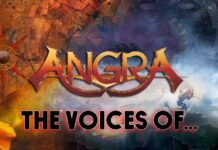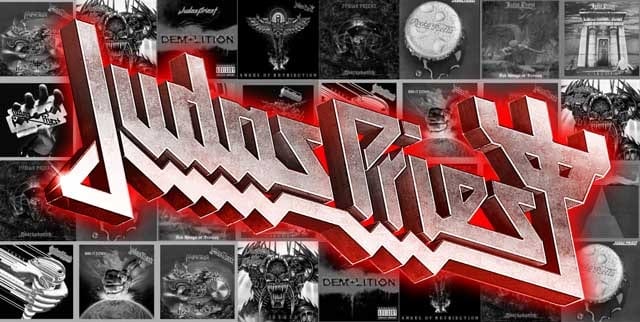
The amazing Judas Priest return to Greece for this year’s Rockwave Festival after releasing an amazing album. This gives us a great opportunity for a special about every album the mighty Priest have released from 1974 until now. Historic records, great moments for heavy metal, as well as big failures, member replacements, changes, expoeriments and more than one emphatic come-backs… this is Judas Priest! More Priest metal on Thursday June 19th at Terra Vibe…
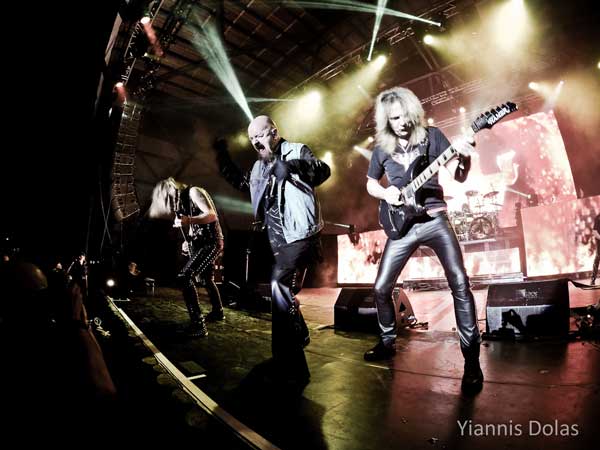
Rocka Rolla (1974)
On September 1974 the first album of Judas Priest was released. The songs of the album are similar to the tend of the era. A mix of rock, blues-rock, and hard rock with some some slight of progressive rock. It has been recorded fully live in the studio because that was the way that their producer Rodger Bain recorded artists. Glenn Tipton didn’t contribute with songs because he joined the band when they were recording the album. He did come up with songs like “Ripper”, “Tyrant”, “Epitaph”, but Bain considered them not commercial enough and rejected them. Bain also rejected “Whiskey Woman” which later, with contributions from Tipton, morphed into “Victim of Changes”. Thankfully they decided to change producer for the next album and we enjoyed these songs that made their success granted. Rocka Rolla has one of the longest recorded tracks by Priest, Run of the Mill, which was written by K.K. Downing when Halford joined the band and it displays the wide range of his unique voice. One powerful singer that played a definitive role for their success in the future.
Favorite Song: Run of the Mill
Dio Pap

Sad Wings Of Destiny (1976)
“Rocka Rolla” was a good debut for the band from West Bromwich (near Birmingham), but not enough to make them stand out. “Sad Wings of Destiny,” the second album of Judas Priest, is the founding stone of the band’s image and sound, as well as the “metal” next to “heavy”. Leather, twin guitars, metal vocals with screams. Everything is here!
With influences (Queen, Black Sabbath) being quite distinguishable on some tracks, the band hardens its sound, finds its identity, while Halford decides to use the full range of his voice.
We are talking about the album that includes “Victim of changes”, “The ripper” and “Tyrant”. Enough said.
Kostas Voulgarelis
{tcg_youtube|view=lriWlHZAy8A}
Sin After Sin (1977)
Everything is running smoothly for the band and amongst disco, punk and rock decline (Zeppelin, Sabbath), things are easy for Judas Priest (but also ACDC and Kiss).
The composing inspiration of the band is still going and the first Speed Metal nuggets are here: “The Sinner”, “Call for the priest”. Heavy metal compositions in the literal sense, such as the “Starbreaker” and the incredible “Dissident Aggressor,” but also more sensitive moments like “Last Rose of Summer” gives variety to the album. Also known as “Riff after riff”, the album also stood for Joan Baez’s famous adaptation of “Diamonds and Rust”, one of the best covers of all time. When folk is transformed into metal! A great anthem.
Kostas Voulgarelis
{tcg_youtube|view=L7_vGoTUYYA}
Stained Glass (1978)
Stained Class is the album that Judas Priest will make the big changes in the evolution of metal music. On the US tour, they mark a dressing code that established a new fashion trend for metal fans. Leather and the biker look, as well as wristbands with spikes were the new look of every metal. An appereance that still remain.
It’s the first Judas Priest album to appear on the Billboard charts and the record that set the template for the NWOBHM and thrash metal. It became one of the most notorious albums in metal. If Black Sabbath’s debut studio album was the spark, Stained Class was the accelerant. The ultimate hybrid of the rampant, imaginative creativity of one of the most important bands of all time. It’s a pivotal release for metal music. The album that the metal community needed in 1978 to show that it was alive through the punk hysteria that had already been emerged. An answer to all those who had written metal off the map:
“Fall to your knees and repent, if you please”
Favorite Song: Saints in Hell
Dio Pap
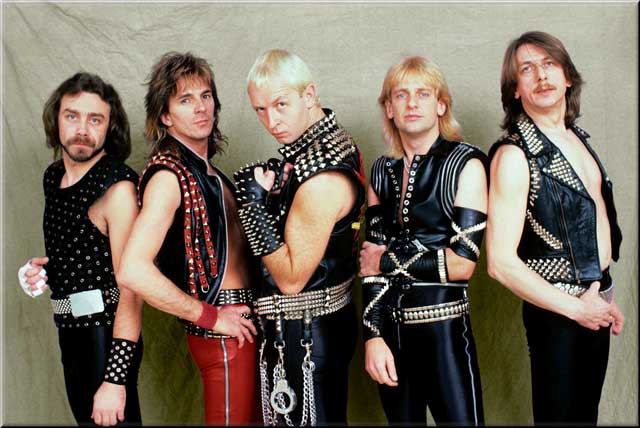
Killing Machine (1978)
One of my favourite Judas Priest albums… a true gem with great songs like “Delivering The Goods”, “Hell Bent For Leather” (that was the album title in the States), “Take On The World”, “Green Manalishi”, “Running Wild”… you get the picture! In the meantime it signals the end of an era as it’s the last album released in the ‘70s and it’s the turning point to the amazing ‘80s that kicked off with the seminal “British Steel”. On the image size the guys put on leather and they bring a Harley Davidson on stage, a part of the show that’s still there until today.
Yiannis Dolas
{tcg_youtube|view=VK3NhVr0PV8}
British Steel (1980)
If you do a gallop among the fans of Priest for their favorite album, this release will not take a high percentage. And no, a stupid song like “United” cannot reduce the greatness of “British Steel”. This is the record that opens with speedy “Rapid Fire” and it has three all-time classics. “Metal Gods”, “Breaking The Law” and “Living After Midnight” are hymns that every fan of this music knows. *SPOILER ALERT* In this tour, the band reserves these songs for the end and sometimes Glenn Tipton goes on stage to play them together. Let’s hope we’ll be lucky enough to witness this.
George Terzakis
{tcg_youtube|view=Qdbi5N3YCQ8}
Point Of Entry (1981)
1981 marked the point of Judas Priest’s entry to the top. It was more or less a sister album to “British Steel” although it was evidently compositionally inferior. It also paved the way for the monumental “Screaming For Vengeance” that will follow one year later and it would catapult the British giants even higher.
“Heading Out To The Highway” became a staple on the band’s set list while “Hot Rocking” became a staple in the hearts of the fans. “Desert Plains” was an instant classic metal song while “You Say Yes” is clearly an underrated track. “Point of Entry” is a Judas Priest and a heavy metalclassic in general.
Dimitris Kazantzis
{tcg_youtube|view=UxV7GTbqC10}
Screaming For Vengeance (1982)
It’s not by accident the No.1 album in sales from Judas Priest discography.
The answer of the guitarist K.K Downing about it: It has an undeniable completeness about it. By that I mean a good and varied selection of songs, a cool cover and an overall uplifting feel that was perfect for the time when it was released.
Better or not, Judas Priest reach the peak of their fame with Screaming for Vengeance. They filed the biggest arenas for concerts and climbed to top music charts all over the world. Vengeance found the band refocusing on heavy metal, and achieving a greater balance between commercialism and creativity. The results were catchy and accessible songs, for every music fan. This album is full of energy and atmosphere and is one of the most complete albums of Priest.
Favorite song: Riding On The Wind
Dio Pap
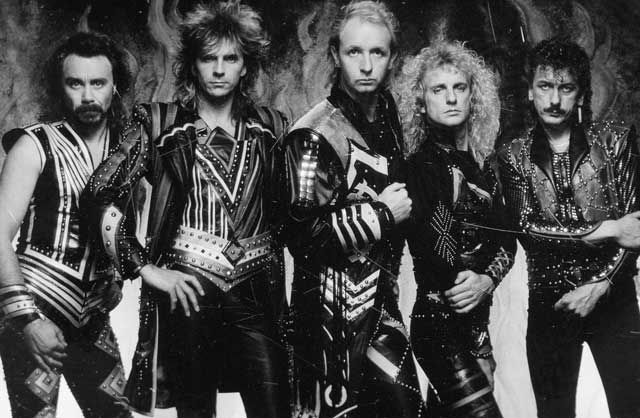
Defenders Of The Faith (1984)
I firmly believe that with the duo Screaming for Vengeance and Defenders of the Faith the band established its dominance in the 80ies and sat comfortably on the very top of the heavy metal universe. For some reason the majority of the fans seem to prefer the first one over the latter but in my opinion there is no comparison. Defenders of the faith outmatches its predecessor in every aspect. Even Metallian, the ravaging beast of the cover is far more intimidating than the flying Hellion. SFV is more of a transitional album from the commercial sounding Point of Entry (an album that was met with discontent by fans and critics). Through DOTF Judas Priest are reinstated as Metal Gods!
Kostas Kounadinis
{tcg_youtube|view=-Fl7yNIPlGM}
Turbo (1986)
Probably the release that was criticized the most by everyone. No wonder of course, considering what came before and what followed some years later. The fans didn’t like the synths at all. But, it’s a Priest record so there are little diamonds there. “Turbo Lover” is amazing, “Out In The Cold”, “Locked In”, “Private Property” and “Reckless” are awesome. Yes, this album is different than the rest. But it rocks. And it’s quite good. And I don’t care what you say.
George Terzakis
{tcg_youtube|view=JhY9GOhFwN4}
Ram It Down (1988)
direction of the band, the sound, the drum machine didn’t go down well. however, far from the kitsch aspect and the jewelery that the band was wearing in typical ‘80s fashion “Ram It Down” had a couple of good songs. “Ram It Down”, I’m A Rocker” and of course “Blood Red Skies” are great, but can they rescue an album from the “avoid” list, I guess not. However, I think that if “Ram It Down” wasn’t ever released, “Painkiller” wouldn’t exist. If “Ram It Down” was a good album and Priest weren’t crucified by the fans for the second time, then they wouldn’t feel any pressure to do something better, reinvent themselves and release a timeless masterpiece that was “Painkiller”.
Yiannis Dolas
{tcg_youtube|view=9WvlWGPiMw4}
Painkiller (1990)
Painkiller should be taught in seminars on how a band can reinvent itself to the maximum effect possible. The change behind the console proved to be undeniably beneficial. Tom Allom handed the reins over to Chris Tsangarides and the result was a wager won for everyone since Painkiller is considered by many as the best album of the band. Myself included most of the times. After all this is a record that although it approaches 30 years of life, it still sounds alive and fresh and unites older fans with the newer generations of the metal world. Let alone the fact that its sound defined an entire era.
Kostas Kounadinis
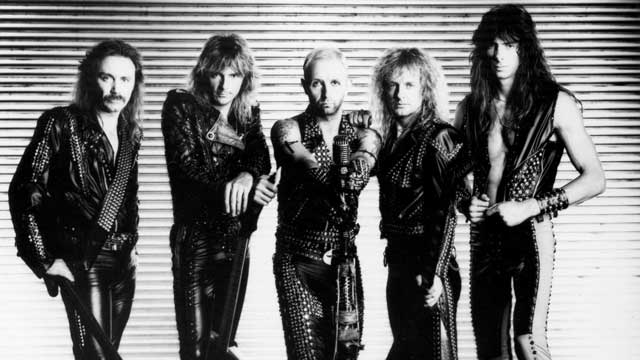
“Jugulator” (1997)
The “Ripper era” is not reckoned by many as one of the better periods in the Judas Priest timeline. To be even more precise, those two albums with Owens haven’t stood the test of time. Personally, I am very fond of “Jugulator” which I truly believe includes some fine moments (“Burn in Hell”, “Bullet Train”, “Blood Stained) and a true masterpiece (“Cathedral Spires”). Was it a classic Priest record? No! Was it a good record? Yes!
Sakis Nikas
{tcg_youtube|view=RSHngMw9nO8}
“Demolition” (2001)
This must be the weaker Priest album together with the ill-conceived “Nostradamus” (“Rocka Rolla” is excluded due to its sonic differentiation). I really like “One On One”, “Hell is Home”, “Closer To You” and a couple of other tracks but all in all the quality level is sub par to what we were used and expect from the mighty Priest. Ripper’s sawn song was not greeted with open arms by both fans and critics alike. Was it Ripper’s fault? No! Was the reunion with Halford necessary? Yes!
Sakis Nikas
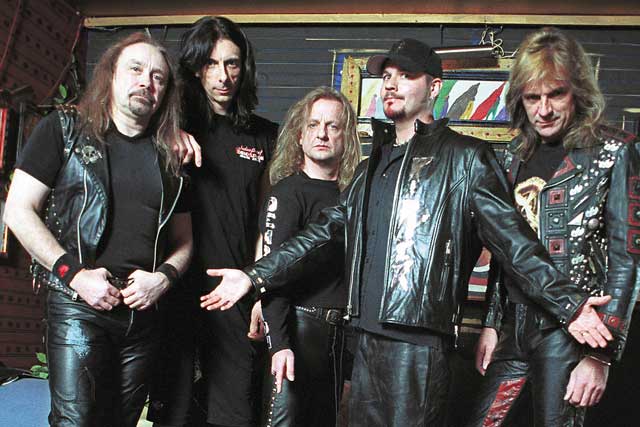
Angel of Retribution (2005)
After reuniting with the metal god, the band needed a solid statement confirming their comeback to ‘normality’, not far from what Iron Maiden managed to achieve with ‘Brave New World’. ‘Angel of Retribution’ indeed was the right record at the right time, showcasing plenty of great moments (‘Judas Rising’, ‘Angel’, ‘Hellrider’) and establishing the fact that Judas Priest still had plenty to offer.
Romanos Terzis
{tcg_youtube|view=S68_spOUvdo}
Nostradamus (2008)
A difficult record to judge, because on the one hand you want to compliment its ambition, on the other hand it does have some weaknesses. The two main issues are the excessive length and the production, which failed to naturally incorporate the symphonic element into the band’s sound. However, in many of the calmer moments Halford delivers some of his most amazing performances, while the best songs (‘Alone’) top stuff from other records that have a better reputation amongst fans.
Romanos Terzis
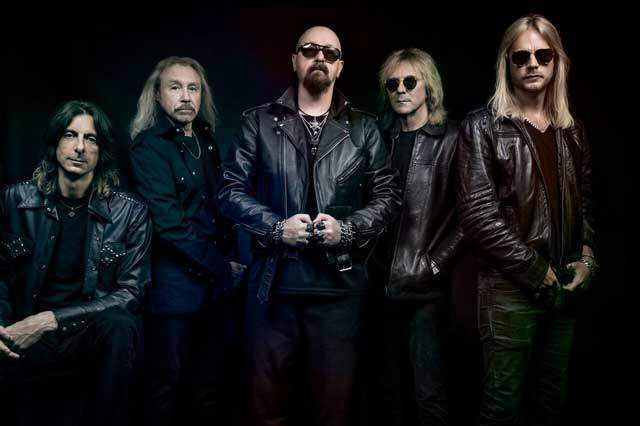
Redeemer Of Souls (2014)
I was so relieved when I first listened to “Redeemer Of Souls” which came after the experimental “Nostradamus”. Six years later, the biggest gap without a studio album in the band’s career, Judas Priest reminded what was their identity and wrote great songs. “Redeemer Of Souls”, “Halls Of Valchalla”, “Hell & Back”, “Battle Cry” can be possible mentioned by the historian of the future as classic Priest material. Of course, Richie Faulkner’s replacing KK played a big part in that. Even the five bonus tracks on the Deluxe Edition were awesome. If only the production was better…
Yiannis Dolas
{tcg_youtube|view=GuDg3u-ZPEM}
Firepower (2018)
I am born a reserved and hard to believe guy that finds it almost improbable that this record was released nowadays. Personally, I relive the days when I was going to my local record store back in the 80s and buying “Screaming For Vengeance” and “Defenders of the Faith”.
Priest released the ultimate metal album of 2018. “Firepower”, “Rising From Ruins”, “Evil Never Dies”, “No Surrender”, “Necromancer” could have easily found a comfortable place to any classic Priest album as the band’s inspiration has hit an all-time high. You are under the impression that Priest were recording like there is no tomorrow and most likely it will be on the top spot of the best records of 2018. This is a record clearly destined to be worn out (this is the vinyl we are talking about….).
Dimitris Kazantzis



